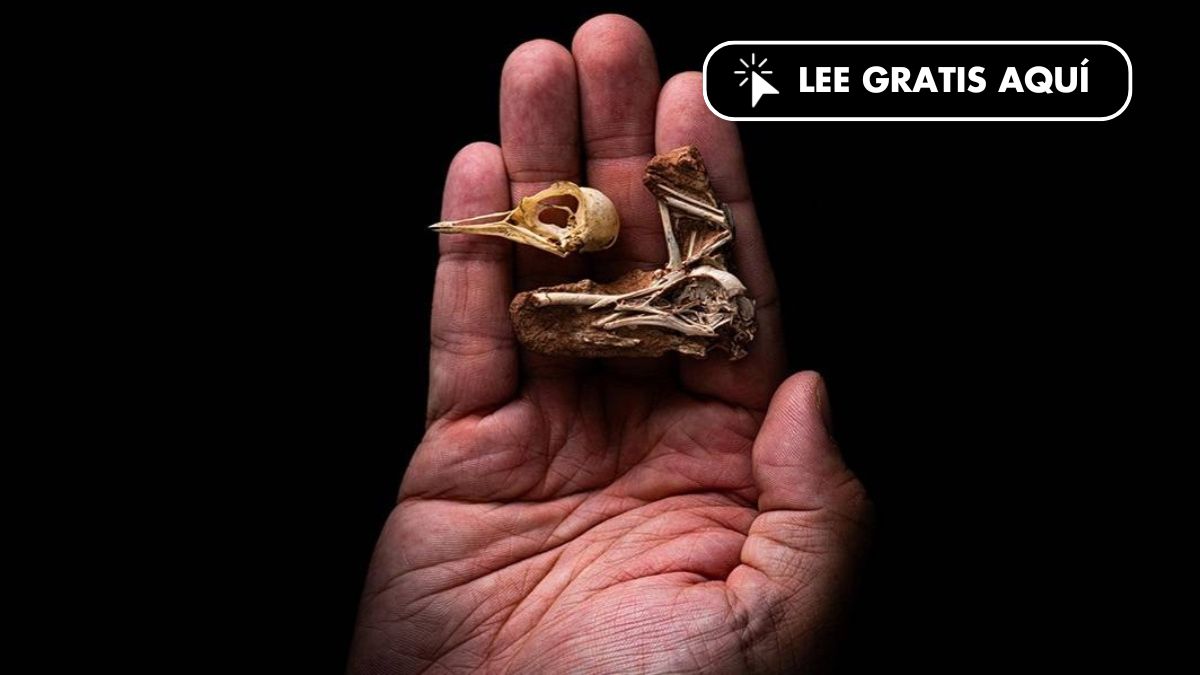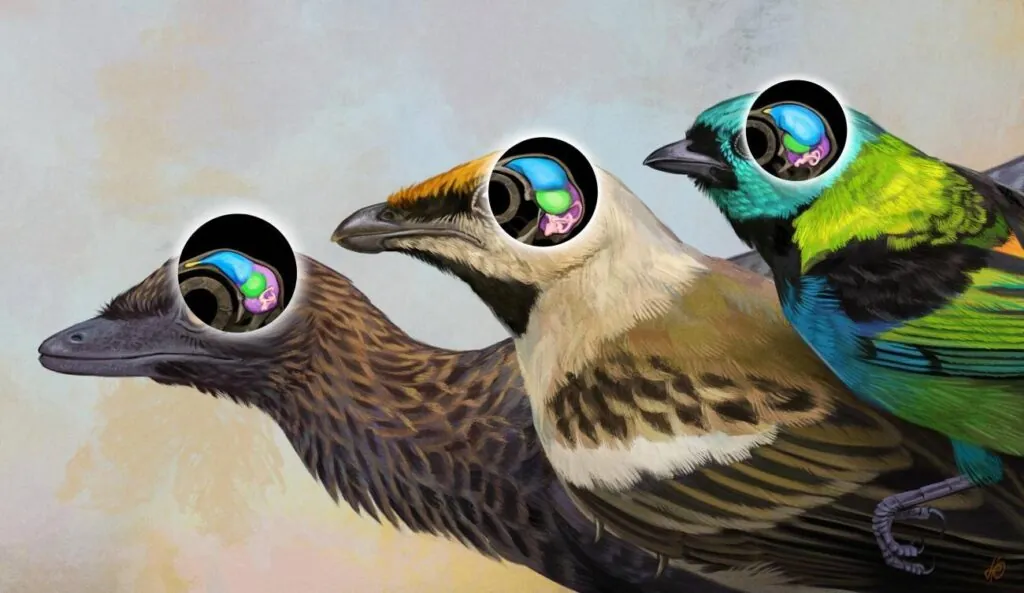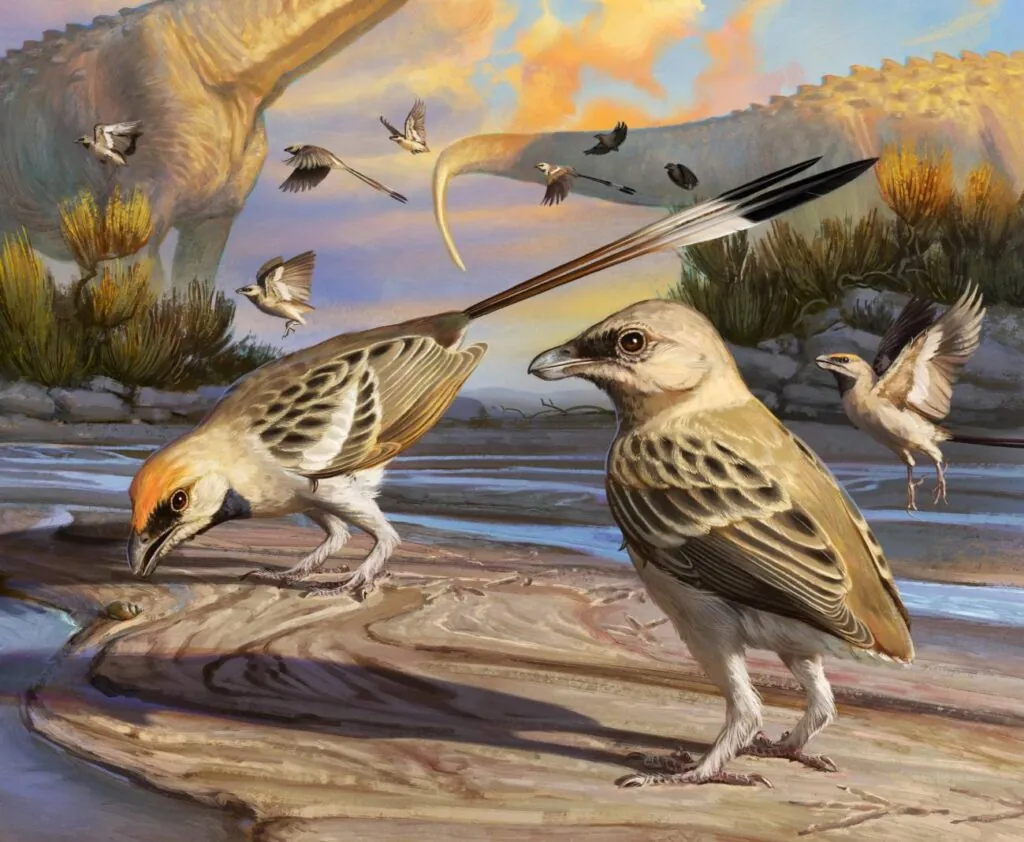A Bird from the Age of Dinosaurs Reveals the Roots of Avian Intelligence

Some birds, such as crows, are known for their intelligence in problem solving. There are many unknowns about how their brains evolved to gain such abilities. The recent discovery of a “one of a kind” fossil, called Navaornis hestiemay change our understanding of the origins of intelligence in modern birds.
This is a fossil species that preserves the entire skull, found in the city of Presidente Prudente in the state of São Paulo in Brazil. His description was published today in the magazine Nature.
“Its skull has a geometrically modern shape, and the finer anatomical details of the bones tell us that it nevertheless belongs to a line of archaic birds that lived only in the Mesozoic era and which evolved independently of the line of modern birds after diverging from them. them over 130 million years ago,” he told SINC. Guillermo Navalon Fernandez. The Spanish scientist is a co-author of the study and works at the Department of Geosciences at the University of Cambridge (UK).
YesIts skull has a geometrically modern form, and the finer anatomical details of the bones tell us that it nevertheless belongs to a line of archaic birds that lived only in the Mesozoic era.
Guillermo Navalon Fernandez, University of Oxford
Navaornis It is named after William Nava, director of the Marilia Paleontological Museum in the Brazilian state of Sao Paulo, who discovered the fossil in 2016. Researchers used cutting-edge micro-computed tomography scanning technology to reconstruct the bird’s skull and brain in extraordinary detail. .
All modern birds They belong to the Neornithes clade. However, during the age of dinosaurs, there was another one: enantiornithines. I would belong to this group Navaornis. These primitive birds, distinguished by great diversity, became extinct at the end of the Cretaceous period.
“The brain of this new species also combines the archaic characteristics we see in Archeopteryx—one of the first birds – and non-avian dinosaurs (small cerebellum) and features that until now we considered unique to modern birds, for example, the connection between the brain and the ventral medulla,” the scientist points out.
Prior to this discovery, knowledge of the evolutionary transition between the brain Archeopteryx and modern birds practically did not exist.
Navaornis’s original habitat was desert with fine-grained sand and small streams with weak currents.
Guillermo Navalon Fernandez
The expert adds: “It also has characteristics that fall in between these two points, such as the telencephalon, the region responsible for complex cognition in birds and mammals, is of medium size.”

Fill the gap in evolution
Not much found so far enantiornithine fossils with intact skulls remaining, leaving a large gap in our understanding of the evolution of avian neuroanatomy.
Navaornis It lived in what is now Brazil during the Late Cretaceous period, about 80 million years ago. A skeleton is attached to the discovered skull. unusually well preserved.
“The original environment in which he lived Navaornis It was a desert with fine sand and small streams with weak currents,” says Navalon Fernandez. “Although taphonomic research in this area is still preliminary, we believe that this combination of sand and weak currents allowed the skeletal remains of birds and other animals that lived in this region not to break or disintegrate and, therefore, to be will be preserved in an exceptional way” continue.
Thus, this fossil becomes a unique specimen that allows one to “read” hidden information. evolution of these vertebrates. “We use the Rosetta Stone metaphor because, just as a famous historical artifact allowed us to understand the connection between Egyptian hieroglyphs and ancient Greek ones, Navaornis allows us to understand the connection between the archaic brain Archeopteryx, one of the first birds, and the brain of modern birds is unique among all lines of reptiles,” the scientist gives an example.
We use the Rosetta Stone metaphor because Navaornis allows us to understand the connection between the archaic brain of Archeopteryx, one of the first birds, and the brain of modern birds.
Guillermo Navalon Fernandez
This fossil fills a 70-million-year gap in our understanding of how bird brains evolved: between the 150-million-year-old Archeopteryx, the oldest known bird-like dinosaur, and the birds that lived 150 million years ago. they live for today.
Navaornis It was the size of a common starling, slightly larger than a sparrow, but smaller than a magpie or jay.

Digital reconstruction
The incredible three-dimensional preservation of the skull allowed researchers to digitally reconstruct the bird’s brain. “To Navaornis We had almost no fossils in 3D Image Saving Status enough to reconstruct the brain shape of birds evolutionarily intermediate between these two points. This new species thus allows us to understand the evolutionary sequence that links the archaic brains of early birds with the enlarged and spherical brains of modern birds,” confirms the scientist.
“The reality is that what we know about the relationship between brain shape and behavior, ecology, or The cognitive abilities of today’s birds are still very weak. Without a solid comparative basis of modern birds, we cannot speculate much about these abilities of fossil birds, from which we only have the form (and cannot observe the behavior),” emphasizes Navalon Fernandez.
The reality is that our knowledge of the relationship between brain shape and the behavior, ecology and cognitive abilities of modern birds is still very limited.And
Guillermo Navalon Fernandez
Primitive features of the brain include the small cerebellum, the part of the brain involved in movement and balance, and the slightly expanded cerebrum, or telencephalon, the largest part of the brain, responsible for higher-level cognition. Against, Navaornis He had a brain bigger than Archeopteryxsuggesting that he had more advanced cognitive abilities than the first bird-like dinosaurs.
resemblance to modern birds They have no teeth, large eyes and a high, spherical skull. According to the authors, the findings help clarify the timing and order of development of the distinctive neuroanatomical features of birds.
Yes, ok Navaornis It is one of the best preserved bird fossils ever found in the world. Mesozoic eraResearchers believe many other finds from the Brazilian site where it was found could provide greater insight into the evolution of birds.
Part of my current and future research program is aimed at expanding our knowledge in this area, but it will still take us years to truly understand these aspects.
Guillermo Navalon Fernandez
“Part of my current and future research program is aimed at expanding our knowledge in this area, but it will still take us years to truly understand these aspects. For now, we can only speculate. For example, Navaornis has a telencephalon intermediate in relative size between Archeopteryx and modern birds. This region of the brain in modern birds (in mammals it includes the neocortex) is involved in complex cognitive functions, and the relative size “It appears to be related to some aspects of this cognitive complexity.”
All this “allows us to speculate that perhaps Navaornis would have had more complex cognitive abilities than Archeopteryx or non-avian dinosaurs, but less than modern birds”, – concludes a scientist from the University of Cambridge.
Navaornis is the latest of a quartet of Mesozoic bird fossils described by Field’s research team since 2018. Ichthyornis, Asteriornis (“miracle chicken”) and Janavis.
